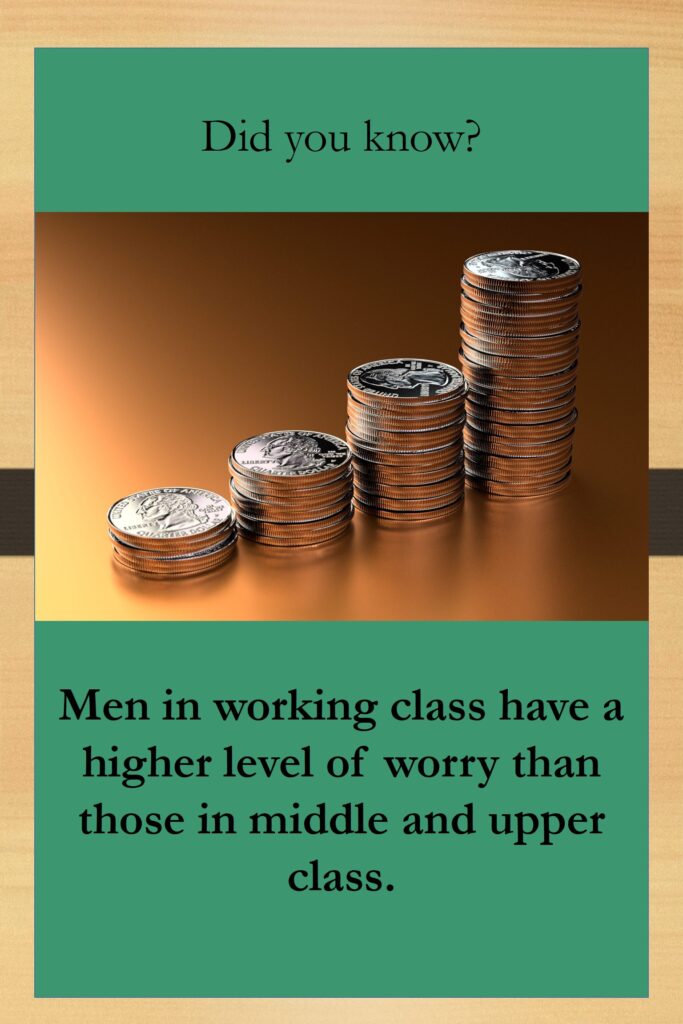During this project, I asked myself how one’s likely to worry in accordance to their socio-economic status. According to the data from the research, it is not surprising that the lower and working classes are more worried than the middle and upper classes. However, there is a huge difference between the middle class and the upper class as the middle class presents more worry than the upper class. Then I looked at the variation of worry among males and females in different socio-economic classes and the results were interesting. Males in the working class have a higher level of worry than the rest of the classes, but with no large difference between all other classes; for all classes, the worry seems high. Similar to males, females in the working class have the highest level of worry, but in the upper class, women show the lowest. I, therefore, wanted to analyze the correlation between worry and other emotions such as sadness, restlessness, and at-ease. Although the correlation is not very strong, it is clear that worry has a positive correlation with SAD (0.32) and RESTLESS (0.29) and a negative correlation with ATEASE (0.29) which indicate that the more one is worried, the more likely they are to be sad and restless than they are to be at ease.
From the same research, I analyzed the level of loneliness among different age groups (group1 <=25, 25<group2<=35, group 3 >35). From the data, it is indicated that the second group shows a high level of loneliness than the first group and the third group. Overall, between 40-60% of participants in all age groups indicated low levels of loneliness. When looking at the effect of loneliness on one’s decision to plan in all groups, it is indicated that in all age groups, there is a tendency of not planning when feeling lonely. From this, one can conclude that regardless of one’s age group, their decision to plan is affected by the feelings of loneliness.
Lastly, I wanted to study how one’s race affects their level of anger and how one is likely to yell or hit something when angry. From the data, it looks like white and other races have no big difference in the levels of anger felt in the past seven days, however, the black race has a higher level of anger over the past seven days than any others. Overall, it is shown that 37% have not been angry at anyone for the past seven days. Although 92.10% reported to yell or hit something when angry, the correlation between the two variables has a very small negative correlation which does not mean that they are more likely to yell or hit something.
